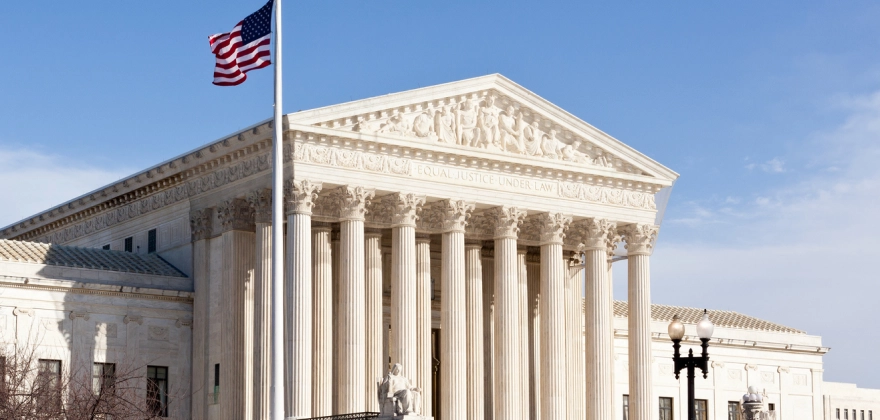Supreme Court Decision Overturns Deference to Agency Interpretations of the Law

Today, the Supreme Court overruled its 40-year-old administrative deference decision—Chevron v. Natural Resources Defense Council—holding that the courts must exercise their independent judgment when deciding whether an agency has acted within its statutory authority. By returning statutory interpretation wholly to the courts, the decision in Loper Bright Enterprises v. Raimondo will assist challengers in arguments that an agency action is contrary to law and/or exceeds statutory authority. This change should level the playing field for health care providers and other challengers in current and future Medicare, Medicaid, and other administrative litigation, and may also provide an opportunity to revisit past lower-court decisions that relied on the Chevron framework.
Previously, under the Chevron doctrine, federal courts assessed “whether Congress has directly spoken to the precise question at issue,” and if the statute is silent or ambiguous with respect to the issue, deferred to the agency’s interpretation of the statute if it “is based on a permissible construction of the statute.” As a result of the extra leeway, an agency could be assured that its reasonable interpretation of an ambiguous statute would be upheld by a court even if it was not the best one possible. With respect to health care providers, the lower federal courts have applied Chevron deference to reject challenges to widely varying federal actions, including among others those imposing far-reaching price transparency obligations on hospitals, determining Medicare provider payment amounts, setting Medicaid rates without consideration of providers’ costs, and applying site-neutral payment to certain hospital clinic visits.
Today’s 6-3 opinion unequivocally jettisons this deference, emphasizing that the courts “must exercise their independent judgment in deciding whether an agency has acted within its statutory authority.” (Emphasis added.) The opinion, authored by Chief Justice Roberts, holds that Chevron deference is inconsistent with the mandate of the Administrative Procedure Act (“APA”), which governs judicial review of agency actions. Under the APA, courts are charged with deciding all relevant questions of law, interpreting constitutional and statutory provisions, and determining the meaning or applicability of the terms of an agency action. Thus, the APA requires that “‘the reviewing court’—not the agency whose action it reviews—is to ‘decide all relevant questions of law’ and ‘interpret . . . statutory provisions.’” But “Chevron defies the command of the APA” by requiring a court “to ignore, not follow, ‘the reading the court would have reached’ had it exercised its independent judgment as required by the APA.” Although the Supreme Court has long recognized that courts “exercising independent judgment often included according due respect to Executive Branch interpretations of federal statutes,” such respect to agency decisions does not mean a court should defer to the judgment of an agency over its own.
In reaching this conclusion, the Court rejects the presumption that statutory ambiguities are implicit delegations to agencies as “misguided.” “[A]gencies have no special competence in resolving statutory ambiguities. Courts do.” And in fact, an agency’s interpretation of the scope of its own statutory authority is “perhaps the occasion on which abdication in favor of the agency is least appropriate.”
At oral argument, some Justices had focused on the potential impact of overturning Chevron on cases decided using the Chevron framework. Litigants and the lower courts will almost certainly explore the impact of this decision on future challenges that relate to or overlap with past cases. But, for now, Loper Bright attempts to limit such uncertainty by emphasizing that courts remain bound by established precedent that relied on Chevron under the doctrine of stare decisis, despite the Court’s change in its methodology for interpreting statutes in APA actions.
Chevron’s demise was not unexpected. As Justice Gorsuch emphasized in his concurrence, the Court has not relied on Chevron since 2016. At the same time, the Court has in recent years articulated further constraints on agency authority. For example, West Virginia v. EPA (2022) requires agency actions of particular political or economic significance to be clearly authorized by the text of a federal statute. And this term, SEC v. Jarkesy articulated constitutional limitations on an agency’s ability to impose civil monetary penalties through its administrative adjudication process.
Professional
HLB is continuing to analyze the impact of this opinion for our clients, in particular with respect to ongoing and future litigation. For questions, please contact Katrina Pagonis and Mark Reagan in San Francisco, Kelly Carroll, David Vernon, Rachel Zacharias, and Bob Roth in Washington, DC, Patric Hooper and Lloyd Bookman in Los Angeles, Sven Collins in Denver, Paul Garcia in San Diego, or your regular HLB contact.







